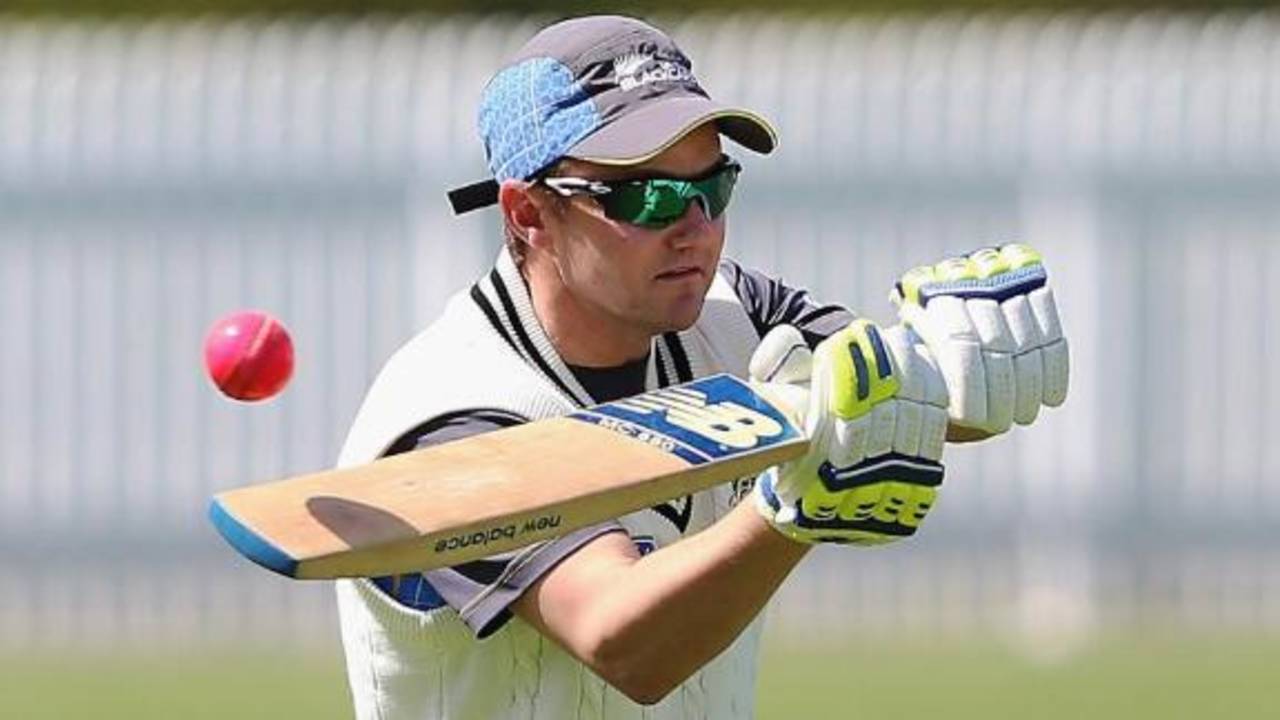Did Lyon decision contravene ICC directive for DRS?
Nathan Lyon's reprieve during the Adelaide Test appears to have been in direct contravention of the ICC's directives for umpires using the DRS
Melinda Farrell and Daniel Brettig
30-Nov-2015
Nathan Lyon's reprieve during the Adelaide Test appears to have been in direct contravention of the ICC's directives for umpires using the DRS.
In a decision New Zealand have lodged a formal protest against, the third umpire Nigel Llong ruled that Lyon was not out despite Hot Spot showing a mark where the ball had passed the back of the bat, before ballooning off Lyon's shoulder and into the hands of Kane Williamson at slip.
Llong's deliberations were broadcast live on the Nine Network's television coverage and, while viewing the Hot Spot vision, he stated three times that he could see a mark. He then told the on-field umpire S Ravi: "There's a mark on the bat but it could come from anywhere."
ESPNcricinfo has confirmed that umpires make their deliberations under instructions that Real-time Snicko (RTS) is only to be used if Hot Spot does not show a mark.
"If the umpire gives it out [and it is reviewed], the third umpire will look at the spin-vision replay to start with, then he'll go to Hot Spot," Geoff Allardice, the ICC head of cricket operations, had said when explaining the introduction of RTS in 2013. "If there's a mark on Hot Spot he'll go straight to out. That's his conclusive evidence straight away. The only time Snicko will be used is if there's no mark on Hot Spot."
Allardice's quotes, however, did not explain the protocol to be followed in the case of not-out decisions.
While RTS was introduced as a virtual insurance policy in cases where Hot Spot does not show a mark on the bat, the technology based on stump mic recordings is not infallible.
Since deliveries from spinners are slower, and therefore the impact softer, stump mics have more difficulty picking up faint sounds. This is compounded when a player steps forward and increases the distance between the stump mics and the ball, their body shielding the mic further from any faint noise. In this instance, after passing the bat, the ball went on to hit Lyon's shoulder. At that point of impact, there was also no spike on snicko.

There was no spike on snicko at the point of impact on the shoulder
New Zealand's coach Mike Hesson made his feelings clear with a sarcastic response to a question about Llong's ruling.
"It was excellent, wasn't it?" he said. "I think everyone at the ground saw what unfolded, and I think it has been spoken about a lot. We've certainly made a representation to the ICC, and at present we're still awaiting an acceptable response. I'll let you know when I hear it."
If Lyon had been given out, Australia would have been 9 for 118 in the first innings with only the injured Mitchell Starc left to bat. Some may point to the fact New Zealand could still have secured victory with a tighter bowling performance after the Lyon ruling, or by avoiding their first-innings batting collapse, but there is no doubt the decision changed the course of the match.
"I guess we'll never know," Hesson said. "The game carried on and took a number of other twists and turns after that, so it's something that I can't answer. But it certainly had an impact."
Hesson said he has no issue with the technology used in the DRS, but New Zealand clearly believe Llong did not follow the correct procedure in using the information available to make his ruling.
"There is a process that needs to be followed within these decisions, and we need to make sure that process was followed correctly," Hesson said. "I don't think there's anything wrong with the technology at all."
The decision descended from controversy to farce when Llong asked to see the ball tracker, to check for an lbw. By this stage, nearly four and-a-half minutes had elapsed and, as Llong had not previously asked to use the Eagle Eye ball tracker, a scramble among technology operators led to the wrong replay being show, which Llong did not seem to notice. The ball tracker showed a replay in which Lyon swept and the ball went to the leg side off the pad.
ICC chief executive David Richardson has indicated in the past that specialist third umpires may be required to implement the DRS more effectively, but even he seemed unsure about the process Llong was required to follow when asked about the incident on the final day of the Test.
"No issues (with the process). I was watching it on television when it happened and I think the process was ok," Richardson told News Limited. "Umpiring decisions are mostly up to the umpire's judgement and you can't be guaranteed which way it's going to go in individual instances.
"I was interested in a poll Channel Nine ran just after, asking 'would you have given it out or not out?' It was pretty much 50-50 the response so it was an extremely difficult decision."
The entire incident suggests that officials, commentators and fans alike require a greater understanding of the correct procedures and the technologies involved, and that umpires need more direct communication with the people who design and operate them.
That this all played out live, with Llong's audio available to viewers, may help in speedier improvements to the DRS system. It may not help New Zealand now. But it would be progress.
Melinda Farrell is a reporter at ESPNcricinfo; Daniel Brettig is an assistant editor at ESPNcricinfo
